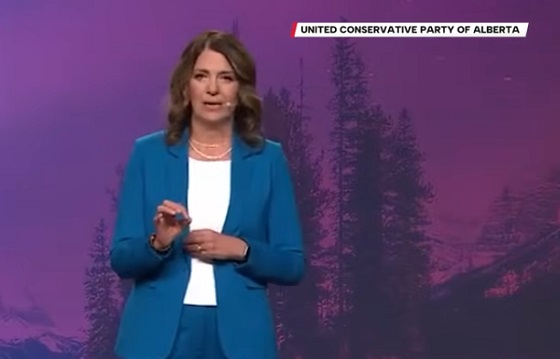National
Statscan: Canada is getting Older, Poorer, and Smaller
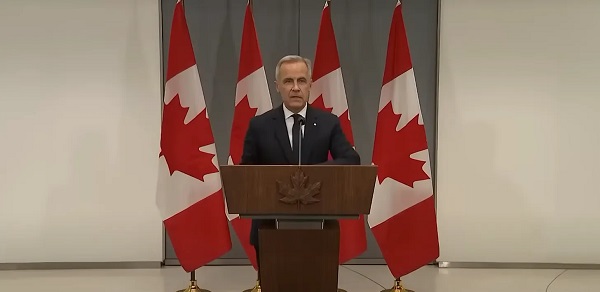
StatsCan’s own data shows the visa bubble popping, fertility collapsing, and GDP per person shrinking—Canada’s decline is policy-made.
So here’s the truth about Canada right now. The country just got older. The population barely grew. And no, it’s not because Canadians suddenly started having more kids. In fact, it’s the opposite. Birth rates are collapsing.
StatsCan’s own Population Estimates, July 1, 2025 release says Canada added only 47,098 people in the last quarter. That’s the slowest second-quarter growth since 1946. Why? Because the one thing propping up the numbers, non-permanent residents on study and work permits, has started to collapse. In fact, almost 60,000 left in just three months: –32,000 study permits and, 20,000 work permits, the second-largest quarterly drop in NPRs ever recorded. The whole thing was a bubble. And now that it’s bursting, we’re left staring at the reality: an aging population, weak natural increase, and no real growth.
The median age jumped again now over 40 and climbing fast. Seniors make up almost one in five Canadians. In Newfoundland and Labrador it’s even worse one in four people is over 65.
And the fertility numbers? They’re catastrophic. StatsCan’s Fertility and baby names, 2024 release shows Canada’s fertility rate hit a record low of 1.25 children per woman last year. That’s what demographers call “ultra-low fertility”, essentially demographic free fall.
Nine provinces set new records for fewest babies ever — Nova Scotia (1.08), Prince Edward Island (1.10), Ontario (1.21), Quebec (1.34), Northwest Territories (1.39), Alberta (1.41), Manitoba (1.50), Saskatchewan (1.58), and Nunavut (2.34). And in British Columbia, it’s basically extinction-level: just 1.02.
To even maintain a population, you need about 2.1 children per woman. To actually grow, you need more than that, closer to 2.3 or higher. Canada today is barely at half of replacement.
Meanwhile, the average age of mothers reached a record 31.8 years in 2024, up from 26.7 years in 1976. And here’s the part no one in government wants to talk about: biology doesn’t care about your housing market or your taxes. A woman in her late 20s has about an 85% chance of conceiving within a year. By the late 30s, it drops closer to 65%, and by 40 it’s around 40% with a much higher risk of miscarriage. By 45, natural conception is rare. So when government policy makes people delay families into their 30s, it’s not just economics working against them it’s biology. That’s nearly five decades of steady delay, and it isn’t a cultural accident, it’s economics. People wait longer and longer to have kids because they simply can’t afford them.
So what happens when you make it impossible for people to start families? When the average mother is now 32, fertility is half of what’s needed, and biology is closing the door? People stop having kids. And that isn’t just about culture, it’s about economics.
Let’s go to the Labour Force Survey. The numbers are devastating. In August, Canada lost 66,000 jobs. The unemployment rate jumped to 7.1%, the highest in years . Almost all those job losses were part-time work, exactly the kind of entry jobs young people use to get their start.
And it gets worse. Students, the people who should be building toward families just endured the worst summer job market since 2009. Unemployment for returning students averaged 17.9% . That’s an entire generation being sidelined before they even begin.
Even for those with jobs, the paycheques aren’t enough. Nearly 1 in 11 workers says they need more hours just to cover basic expenses. Among part-timers, almost a quarter said outright: I need more work to pay my bills .
So add this up: collapsing job prospects, shrinking hours, higher costs, and delayed families. The result isn’t a mystery. It’s why fertility is tanking, why people are waiting longer, and why the average Canadian is getting older by the day. And the real measure of prosperity—real GDP per person—backs it up: it fell 0.4% in Q2-2025, and for all of 2024 it was down 1.4% after –1.3% in 2023. In other words, your slice of the economy is getting smaller, not bigger.
This is why I hammer the spin, the government, the state media chorus—because when you strip away the talking points and look at the numbers, it’s devastating. The population barely grew once the visa bubble popped. We’re getting older fast. Fertility is at record lows. The labour market is weaker than advertised—fewer jobs, fewer hours, paycheques that don’t reach the end of the month. And the real scoreboard—GDP per person—says Canadians are getting poorer, not richer.
That’s not a narrative problem; it’s a reality problem. Families don’t form in a country where housing is out of reach, taxes and groceries gut your budget, and your share of the economy keeps shrinking. So spare me the press conferences. Build an economy where young people can buy a home, start a business, and have kids without a panic attack. Cut the cost-drivers. Reward work. Make family life possible again.
Until that happens, all the “record population” headlines are just a shell game. The people paid to challenge this BS aren’t doing it, so we will. Because the numbers aren’t partisan; they’re a warning. And if we ignore them, there won’t be much of a country left to argue over.
Subscribe to The Opposition with Dan Knight .
For the full experience, upgrade your subscription.
Censorship Industrial Complex
Justice Centre campaigning Canadian provinces to follow Alberta’s lead protecting professionals

Justice Centre launches national campaign to stop ideological overreach in regulated professions
The Justice Centre for Constitutional Freedoms announces the launch of a national campaign urging all provinces to adopt legislation that restores professional regulators to their proper role of overseeing competence and ethics, rather than compelling speech or imposing political ideology on regulated professionals who serve the public.
Across Canada, professionals such as doctors, nurses, teachers, social workers, engineers, dentists, lawyers and many others are governed by regulatory bodies created to uphold technical competence and ethical standards. Instead of focusing on those core responsibilities, however, many regulators have begun embedding political or ideological content into mandatory courses, codes of ethics and continuing education requirements.
At the same time, professionals are increasingly being investigated or disciplined not for misconduct, but for expressing personal views or declining to endorse political positions.
To help Canadians take action, the Justice Centre has created an online tool with a ready-to-send letter that goes directly to the provincial representatives responsible for the relevant legislation. All the user needs to do is select their province and enter their information, and the tool automatically delivers the letter to the appropriate recipient.
The prepared letter outlines three essential legislative amendments:
- prohibiting regulatory bodies from pursuing political objectives;
- prohibiting regulators from monitoring or controlling the speech of their members; and
- prohibiting regulators from embedding political or ideological content into definitions of competence and ethics.
Alberta is the first province to take meaningful steps toward addressing this growing problem. Its proposed legislation, called the Regulated Professions Amendment Act, is designed to prevent regulators from compelling speech, advancing political objectives or embedding ideology into definitions of competence and ethics.
The Justice Centre encourages all Canadians to visit our website today to take action and help protect the independence of regulated professionals.
espionage
Digital messages reportedly allege Chinese police targeted dissident who died suspiciously near Vancouver

 Sam Cooper
Sam Cooper
‘Our superiors … want to get rid of him’
Radio-Canada, drawing on digital records first disclosed to Australian media in 2024 by an alleged Chinese spy, has reported new evidence suggesting that a Chinese dissident who died in a mysterious kayaking accident near Vancouver was being targeted for elimination by Chinese secret police and agents embedded in a Chinese conglomerate that the U.S. Treasury now accuses of running a multibillion-dollar organized-crime, money-laundering and modern-slavery empire out of Cambodia.
The new reporting focuses on a man identified only as “Eric,” a former undercover agent for Office No. 1 of China’s Ministry of Public Security — the police ministry at the core of so-called “CCP police stations” in global and Canadian cities, and reportedly tasked with hunting dissidents abroad.
Australia’s Four Corners revealed Eric’s story in May 2024, reporting that he had fled China in 2023 and walked into the headquarters of Australia’s domestic intelligence agency, ASIO, carrying a phone loaded with years of internal messages and records.
It also reported that Eric had been invited to testify in Canada’s Foreign Interference Commission, known as the Hogue Commission, about Beijing’s operations on Canadian soil.
“In an August 2024 report, ABC Investigations wrote: ‘Eric told ABC Investigations he had been invited to testify as a witness in the next round of hearings, scheduled to start in September.’”
But there is no public sign that his evidence was ever examined in open hearings or mentioned in the Commission’s final reports, suggesting that any material he supplied was handled entirely behind closed doors, if at all.
According to Radio-Canada’s Enquête program, reporters travelled to Australia to interview Eric and forensically review the contents of his phone: thousands of text and voice messages between 2016 and 2023, as well as financial records and internal documents that he says came from Office No. 1 and its corporate covers.
The archives reportedly include detailed exchanges with his superiors, evidence of clandestine money transfers and the names of individuals allegedly involved in overseas espionage and repression.
One sequence, labelled “The target,” captures the moment Eric is ordered to focus on a dissident painter named Hua Yong, who had already become notorious in China for blood-marked Tiananmen commemorations and for documenting mass evictions in Beijing.
Citing the exchange, which has not been independently reviewed by The Bureau, Radio-Canada quotes:
Office No. 1: Our future communications must be encrypted.
Eric: What are the orders?
Office No. 1: Listen carefully to my request. It concerns Hua Yong. Our superiors find him troublesome and want to get rid of him.
Those messages set the tone for what follows: a multi-year manhunt that begins in Thailand and ends with Hua dead off Canada’s Sunshine Coast. Eric says Hua was formally designated a high-value target, and the same phone records, as summarized by Enquête and earlier Four Corners reporting, show that a bounty was placed on Hua’s head — roughly the equivalent of US$20,000 if he were captured and repatriated.
To win Hua’s trust, Eric reportedly constructed an elaborate false persona. On social media and encrypted apps, he posed as a radical anti-Communist militant, proposing the creation of a jungle “armed camp” and a band of revolutionaries. He then invented “Brigade V,” a fake guerrilla group he promoted online while appearing in videos in camouflage and a balaclava. Hua, in exile and under pressure, was impressed. “This is brilliant,” he reportedly wrote privately, according to the message logs, and the two men soon met in person in Bangkok, drinking wine and plotting what Hua believed was resistance — all while Eric quietly fed reports back to the political-security police.
The Bureau is a reader-supported publication.
To receive new posts and support my work, consider becoming a free or paid subscriber.
It is this kind of mix of covert state targeting and deniable intermediaries that is now worrying Western security officials.
In November, ASIO director-general Mike Burgess used a major speech to warn that some authoritarian regimes are showing a “growing willingness” to mount “high-harm operations” abroad. Without naming specific countries, and not referring to Eric’s alleged evidence, he said his service believes “at least three nations” are willing and capable of carrying out lethal attacks in Australia, and may try to hide their involvement by contracting criminal “cut-outs.”
Canada’s own oversight bodies have been tracking a similar threat pattern.
In a 2024 report, the National Security and Intelligence Committee of Parliamentarians (NSICOP) described a fully redacted 12-paragraph case study of what it called the “most egregious” People’s Republic of China proxy identified by Canadian intelligence. The public summary says CSIS assessed that one aspect of the proxy’s behaviour posed a “high-risk, high-harm” threat to some Canadians and permanent residents, and that CSIS shared information on the proxy with the RCMP.
The same report notes that intelligence from CSIS and the Communications Security Establishment showed foreign states covertly attempting to buy influence with candidates and elected officials — a backdrop that makes the Hua Yong file, and the allegations of lethal targeting orders and corporate covers around Eric, especially sensitive.
Eric’s phone records, as described by Enquête, show that companies tied to his work gave him the freedom and cover to travel across Southeast Asia, build false identities and infiltrate exile networks, while maintaining his status as an MPS officer. One cover in particular stands out: a vast conglomerate in Cambodia that, on paper, dealt in real estate and finance and handled billions of dollars. Enquête identifies it as Prince Group and says Eric worked under its umbrella in 2016–2017 — a claim the company reportedly did not answer when approached by Radio-Canada.
That corporate name now has much wider resonance, and alleged connectivity to China’s United Front Work Department.
In October, the U.S. Justice Department unsealed an indictment charging Prince Group chairman Chen Zhi with orchestrating a forced-labour “pig-butchering” scam empire from compounds in Cambodia, while the U.S. Treasury and its U.K. counterpart simultaneously designated the “Prince Group Transnational Criminal Organization,” sanctioning Chen and 146 linked individuals and entities. Officials allege the network ran industrial-scale cyber-fraud centres staffed by trafficked workers, laundered billions in criminal proceeds and used shell companies and high-end real estate — including London properties — to wash illicit funds.
U.S. material also ties Prince Group into the orbit of Chinese state-aligned figures. Sanctions filings link Chen Zhi to Wan Kuok-koi, the Macau Triad boss known as “Broken Tooth,” whose modern Hongmen association has been described by U.S. officials as directly connected to the Chinese Communist Party’s United Front Work Department. They further allege that Prince Group worked with Palau-based businesswoman Rose Wang, a former vice-president of Palau’s Overseas Chinese Federation, who helped broker access and casino licences while acting as a facilitator for the scam network — a role analysts say dovetails with informal diplomacy and influence work on Beijing’s behalf.
Against that background, Eric’s description of Prince Group as one of his covers fits with The Bureau’s source material tying alleged Chinese police-station networks in Canada to underground casino and Chinese mafia structures entangled with United Front-aligned political figures.
In Eric’s interview with Radio-Canada, he portrays the Prince Group conglomerate as part of a broader ecosystem of ostensibly legitimate companies that quietly cooperate with Chinese security services — providing salaries, visas, office space and a glossy façade for officers like him to operate overseas. The digital trail Enquête reconstructed links that ecosystem to the micro-level surveillance of Hua Yong: reports on his movements, photographs of his residence in Canada, and continual updates to superiors who had bluntly said they wanted to “get rid of him.”
By April 2021, Hua had slipped out of Southeast Asia and arrived in Halifax on a humanitarian protection visa. From there, he moved west, eventually settling in the coastal community of Gibsons, British Columbia. Enquête reports that Eric continued to track him remotely, sending situation reports back to Office No. 1 even after Hua appeared to have found a measure of safety in Canada.
In November 2022, Hua reportedly set out alone in a bright yellow kayak and never returned. His body was later found on an island off the Sunshine Coast. The RCMP concluded that he had drowned and said they found no evidence of foul play; officers were not aware, at the time, that he was the subject of a Chinese police operation. According to Radio-Canada, three years later the case is still not fully closed: the British Columbia coroner has yet to issue a final report — an unusually long delay in a province where such inquests typically take around 16 months. In an email cited by Enquête, the Coroners Service said factors such as the complexity of a file and “investigations conducted by other agencies” can prolong a case.
According to Radio-Canada, Eric himself is ambivalent about what happened on the water that day. He told Enquête he had wondered whether Hua was murdered and recalled Hua’s own suspicion, during a severe illness in Canada, that he might have been poisoned. But he also pointed to later online information suggesting the death might have been an accident, and emphasized that he has no definitive proof either way. What he does insist on is that Hua was a live target of a Chinese operation at the time he died — and that, based on standard MPS tradecraft, there were “certainly other teams” beyond him monitoring the dissident in Canada.
Eric also reportedly says he has never been contacted by RCMP about Hua’s death. Instead, he told Enquête that he has provided documents from his phone archive to Canada’s Commission of Inquiry into Foreign Interference in confidential channels. From his vantage point — as the officer who received the “get rid of him” order, posed as Hua’s ally and then watched him restart his life in Canada — he argues there are “strange aspects” to the case that demand further scrutiny.
The Bureau is a reader-supported publication.
To receive new posts and support my work, consider becoming a free or paid subscriber.
-

 Alberta2 days ago
Alberta2 days agoThis new Canada–Alberta pipeline agreement will cost you more than you think
-
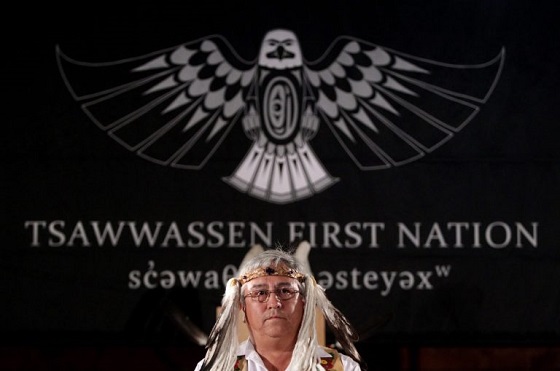
 Energy2 days ago
Energy2 days agoUnceded is uncertain
-
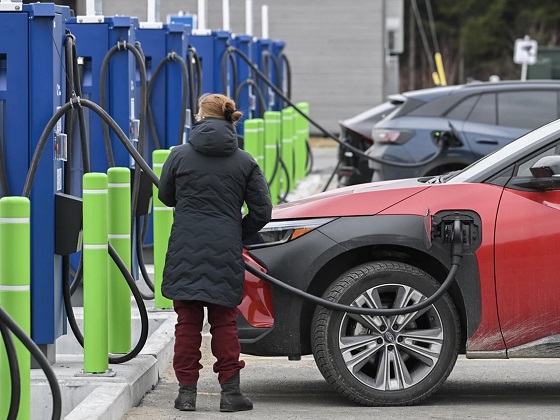
 Automotive2 days ago
Automotive2 days agoPower Struggle: Governments start quietly backing away from EV mandates
-

 Business18 hours ago
Business18 hours agoCanada’s climate agenda hit business hard but barely cut emissions
-
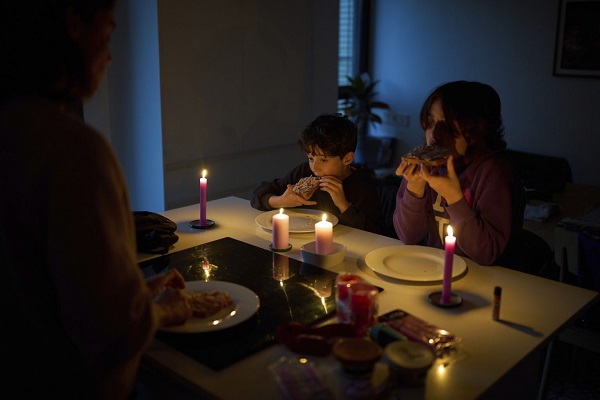
 Energy22 hours ago
Energy22 hours agoCanada following Europe’s stumble by ignoring energy reality
-

 MAiD1 day ago
MAiD1 day agoFrom Exception to Routine. Why Canada’s State-Assisted Suicide Regime Demands a Human-Rights Review
-
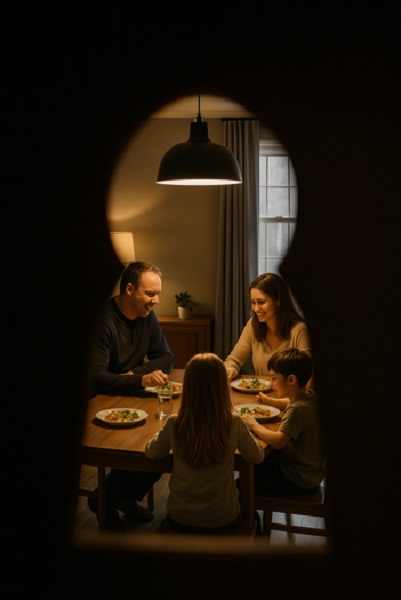
 Alberta2 days ago
Alberta2 days agoAlberta will defend law-abiding gun owners who defend themselves
-

 Business1 day ago
Business1 day agoCarney government should privatize airports—then open airline industry to competition





